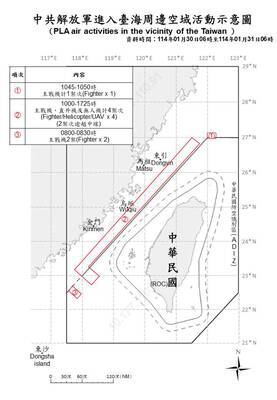Brown-Forman Corp’s Paul Varga and Johnson & Johnson’s William Weldon are among chief executive officers left behind in this year’s stock-market rebound even after they created the most value for their companies.
Brown-Forman, the maker of Jack Daniel’s whiskey and Southern Comfort liqueur; J&J, the world’s biggest health-products company; and 30 other Standard & Poor’s 500 Index companies rallied less than 10 percent this year as their managers posted better-than-average sales and efficiently invested capital, data compiled by Bloomberg show. Companies with the biggest stock gains had among the lowest scores in a ranking known as economic value added.
Money managers ignored profitability to snap up stocks that dropped the most in the credit crisis, leaving opportunities for value investors next year, Raiffeisen Capital Management and Credit Andorra said. They’re buying this year’s laggards, betting companies with the highest returns on shareholders’ capital will be rewarded as the US Federal Reserve prepares to raise interest rates and the government removes stimulus.
CREATING VALUE
Fewer than 215 companies in the S&P 500 created value last year as the US economy experienced the worst contraction since the Great Depression, showed data compiled by Bloomberg based on consulting firm Stern Stewart & Co’s EVA model. Their so-called return on invested capital exceeded the cost of funding their operations, the economic value added data show.
Thirty-two of those companies are projected to increase sales or report a smaller drop than the 5.9 percent median for the S&P 500 this year, while posting an equity-market advance that trailed 10 percent, Bloomberg data show. Shareholders missed out as the benchmark index for US stocks rose 25 percent last year and 67 percent during the past nine months, the most in seven decades, after the government lent, spent or guaranteed more than US$11 trillion to end the financial crisis.
MORE RELIABLE
EVA, also known as economic profit, is a more reliable gauge of management performance because it treats the price of intangible assets such as research as an investment, while measuring all returns against the cost of raising money for the business, Stern said.
The argument that “earnings per share is a driving force on value fails in the face of actual evidence,” he said. “It’s not earnings or dividends that create value, but economic performance.”
Varga posted a return on invested capital of 15 percent during the past year at Brown-Forman, data compiled by Bloomberg showed. That beat the Louisville, Kentucky-based company’s so-called cost of capital by 7.8 percentage points.
ELIMINATING 7,000 JOBS
J&J exceeded its cost of capital by 9.3 percentage points in the past four quarters. The company, based in New Brunswick, New Jersey, has beaten the analyst profit forecast 14 straight quarters and CEO Weldon said on Nov. 3 that he will fire more than 7,000 workers to eliminate layers of management to free up money to invest in more profitable businesses. The shares rose 8.1 percent this year.
Procter & Gamble Co, the world’s biggest consumer-products company, reported first-quarter profit on Oct. 29 that fell less than analysts estimated and raised its full-year forecast for sales growth. The stock lost 0.9 percent this year.
‘EXTREMELY HIGH’
Investors favored companies with the weakest finances during the nine-month rally in the S&P 500, said Nick Skiming at Ashburton Ltd. That’s partly because those shares suffered the most during the credit crisis as traders priced in the possibility of a depression following the collapse of Lehman Brothers Holdings Inc in September last year, he said.
“The poorer balance-sheet stocks rallied because they were oversold,” said Skiming, who helps oversee about US$2 billion from Jersey, the Channel Islands, and owns shares of Kraft Foods Inc and Procter & Gamble.
Northfield, Illinois-based Kraft is also among the 32 companies that passed the EVA test.
“Risk of default was extremely high. Going forward, the rally will broaden out and the blue chips will start to rally,” he said.
The S&P 500 plunged 57 percent through March 9 from a record high of 1,565.15 in October 2007, wiping out US$11 trillion in value. More than US$1.7 trillion in bank losses and writedowns stemming from the collapse of the subprime mortgage market caused the collapse of Lehman Brothers and Bear Stearns companies, both from New York, and forced the US government to bail out American International Group Inc last year.
The 25 companies in the S&P 500 who did worst according to EVA this year posted a median rally of 95 percent this year, compared with the 51 percent median gain for the 25 that did the best. The trend will probably reverse, said David Macia, US fund manager at Credit Andorra’s Credi Invest unit in Andorra La Vella, Andorra.
“The market will be much more selective and will bet for companies that give more certainty,” said Macia, whose firm oversees US$5.7 billion. “It won’t be such an indiscriminate rally. Companies will now need to prove their ability and show they can boost revenue.”
PROFIT MOMENTUM
“What’s important is performance relative to expectations,” McConnell said. “You can look at the change and momentum in economic profit. Companies that improve their performance will do better in the equity market.”
A HOLT index of 60 US stocks with the best economic profit prospects has gained 195 percent since April 1996, compared with about 112 percent for the S&P 500 including reinvested dividends.
Joseph Keating of RBC Bank said he’s buying companies with “reliable” revenue growth, including J&J and Purchase, New York-based PepsiCo Inc, the world’s biggest snack maker. PepsiCo beat its cost of capital by 13 percentage points this year. Keating said investors are likely to shift away from companies with the worst prospects.
Also See: What to do with boardroom culture that can’t deliver the goods?

Taiwanese actress Barbie Hsu (徐熙媛) has died of pneumonia at the age of 48 while on a trip to Japan, where she contracted influenza during the Lunar New Year holiday, her sister confirmed today through an agent. "Our whole family came to Japan for a trip, and my dearest and most kindhearted sister Barbie Hsu died of influenza-induced pneumonia and unfortunately left us," Hsu's sister and talk show hostess Dee Hsu (徐熙娣) said. "I was grateful to be her sister in this life and that we got to care for and spend time with each other. I will always be grateful to

UNITED: The premier said Trump’s tariff comments provided a great opportunity for the private and public sectors to come together to maintain the nation’s chip advantage The government is considering ways to assist the nation’s semiconductor industry or hosting collaborative projects with the private sector after US President Donald Trump threatened to impose a 100 percent tariff on chips exported to the US, Premier Cho Jung-tai (卓榮泰) said yesterday. Trump on Monday told Republican members of the US Congress about plans to impose sweeping tariffs on semiconductors, steel, aluminum, copper and pharmaceuticals “in the very near future.” “It’s time for the United States to return to the system that made us richer and more powerful than ever before,” Trump said at the Republican Issues Conference in Miami, Florida. “They

REMINDER: Of the 6.78 million doses of flu vaccine Taiwan purchased for this flu season, about 200,000 are still available, an official said, following Big S’ death As news broke of the death of Taiwanese actress and singer Barbie Hsu (徐熙媛), also known as Big S (大S), from severe flu complications, the Centers for Disease Control (CDC) and doctors yesterday urged people at high risk to get vaccinated and be alert to signs of severe illness. Hsu’s family yesterday confirmed that the actress died on a family holiday in Japan due to pneumonia during the Lunar New Year holiday. CDC Deputy Director-General Tseng Shu-hui (曾淑慧) told an impromptu news conference that hospital visits for flu-like illnesses from Jan. 19 to Jan. 25 reached 162,352 — the highest

TAIWAN DEFENSE: The initiative would involve integrating various systems in a fast-paced manner through the use of common software to obstruct a Chinese invasion The first tranche of the US Navy’s “Replicator” initiative aimed at obstructing a Chinese invasion of Taiwan would be ready by August, a US Naval Institute (USNI) News report on Tuesday said. The initiative is part of a larger defense strategy for Taiwan, and would involve launching thousands of uncrewed submarines, surface vessels and aerial vehicles around Taiwan to buy the nation and its partners time to assemble a response. The plan was first made public by the Washington Post in June last year, when it cited comments by US Indo-Pacific Commander Admiral Samuel Paparo on the sidelines of the Shangri-La Dialogue